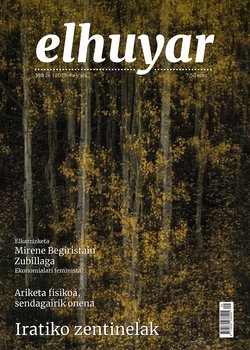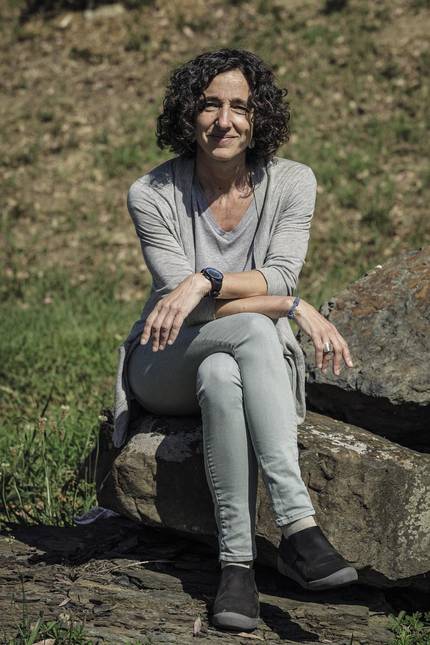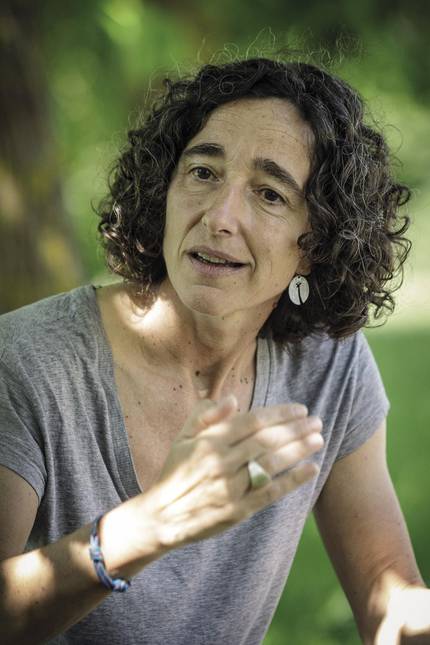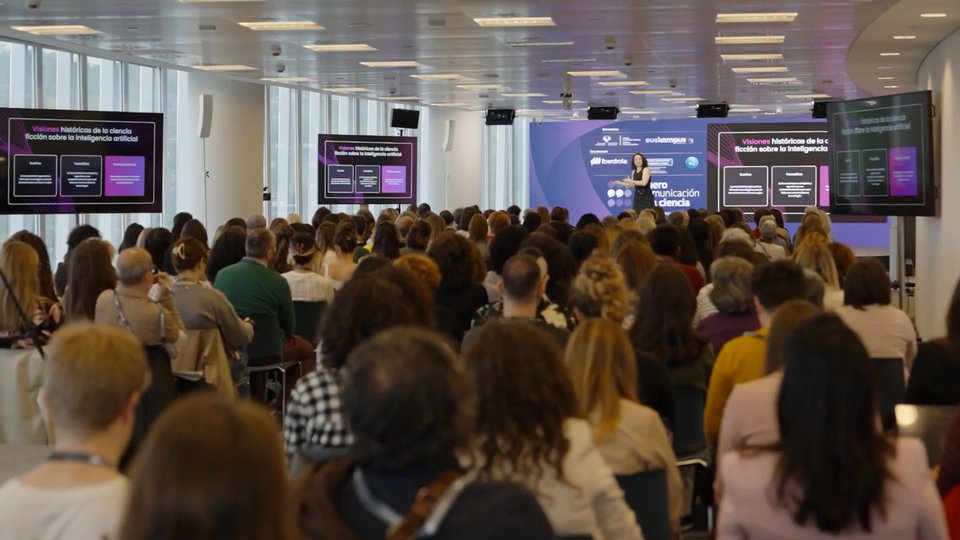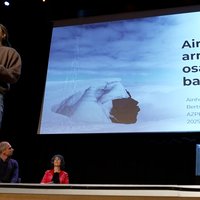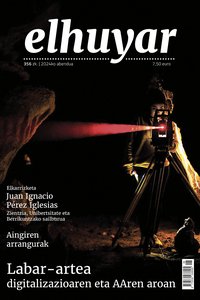“Human beings on Earth do not deceive us”
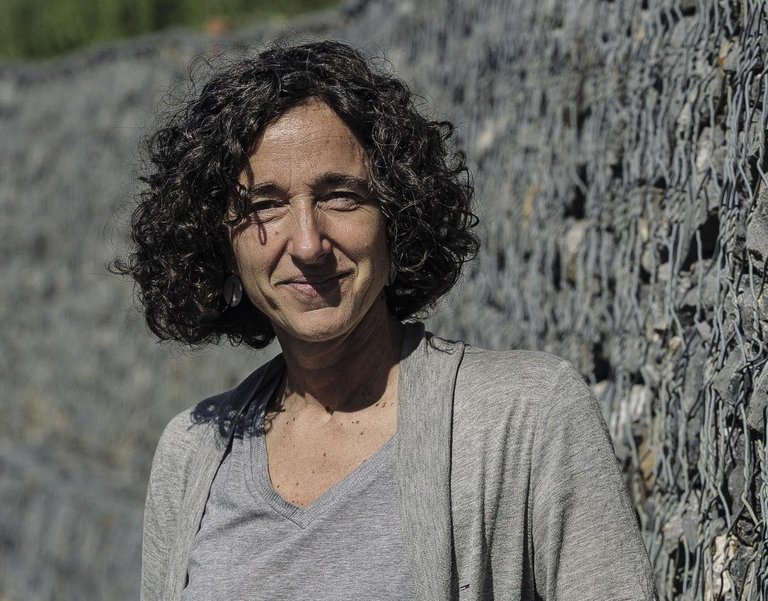
Ufa, many things. Not all the mountains say the same thing. When they are naked, with little soil and little vegetation, they tell me what were the times when the rocks arose. In karst landscapes, for example: Itxina, Aralar, Aizkorri… In those with more coverage I see how they left the sea, since the waves generated some abrasion in those rocks. Then, the rain water did its job creating caves. All this is written in relief and most people do not see it. If they knew that to create the floor they tread has been 6,000 years, or when we are seeing the deposits abandoned by the glaciation of 20,000 years ago, they would look at the landscape with another respect.
[Laughs] So look, the holes have the ability to keep in their interior everything that is not saved outside. All the eroded of the mountains is dragged by the water that ends in caves. They are very interesting to perform geological readings. In Euskal Herria we have more than 6,000 holes located by speleologists and we have records of all of them.
We analyze the stalagmites of the caves; the records that leave on the ground the drops fallen from the stalactites. The crystals that form on Earth acquire one form or another depending on the rainfall of the rainfall (for example, if it is a sirimiri, if it is water left by the cresal or if it is a matter of storms), of the degree of saturation of the water in the calcium carbonate, of the temperature of the cave… Thus, analyzing the shapes of these crystals we approach to know the rains of the past.
Except for a few volcanic rocks, practically all the rocks that emerge in the Basque Country are rocks deposited in the sea, some in small depths, in the deltas of the rivers, others, flysch, in the seas of more than 1.000 meters of depth… Some, in cold waters, others, more tropical… Of season, but all of them emerged in the sea. Think that in it they spent 260 million years long, accumulating sediments and becoming rock by the load, occasionally with submarine volcanoes. It was during the Cretaceous, from the Triassic to the Lower Paleogen.
What happened? About 40 million years ago, by plate tectonics, this sea began to close. Until then all this was an open sea, between two continental plates: Iberian plate and European plate. Pangea was dividing the supercontinent and opening both plates. But, suddenly, the forces changed and a plate began to push. In this clash the Pyrenees emerged. This closure took place as a scissors, beginning with the area of Catalonia. Thus, the mountains began to be created in the area of Catalonia and then in ours. When the sea was closed between the two plates, the coastline began to move in the Basque Country: although then it was coming from Vitoria to the south, until the stretch of the Rioja, the coastline began to go back with the creation of the Pyrenees. At that time, all these rocks accumulated in the sea for millions of years began to be expelled. It begins to fold Euskal Herria creating mountains and valleys.
Since then, our mountains have been eroded. And they will continue to do so while no forces change for another plate movement.
Yes, they are already united and have a joint movement. It moves very little. Regarding the movement of other plates, we can say that our plate is dead. From time to time we have small earthquakes — the Earth also reminds us that it is moving — but, in general, we can hardly appreciate the movement of our plate with respect to others, since we are far from violent contacts.
The contacts between plates can be very varied. Some are a kind of faults that cause terrible earthquakes, like that of North America. Others are collision, when the plates collide and a plot leaves sharply upwards. The himalayas, for example, are still growing on the rise, unlike the Pyrenees. And there are others of subduction: when one plate enters under the other with much force, creating incredible volcanoes. This occurs throughout the western shore of South America, and the submarine land is constantly being lost. Other times the earth is created: in the dorsal. When the plates open a new rock is formed when cracking. In the Atlantic Ocean the dorsal is opening, but here it is not noticeable. We are in a rather peaceful place.
Going back in the orogenic cycle, it is observed that the earth of the planet melts cyclically, then breaks, each piece goes by its side and rejoins. We know what the relative movements of the plates are and it is expected that within about 200 million years everything will rejoin and a new supercontinent like Pangea is created. It is called Amasia. All this modelled and visible to all.
It is opening the Atlantic dorsal and will play on the other side of the Pacific. Micro and macroontinents will be added around Asia, where they will be called Amasia. The speeds of all the plates are not equal, but it is already planned that it will collide first with what. The collisions between India-Eurasia and Arabia-Eurasia have already begun, which will bring with it the sum of Africa and Eurasia in the near future, logically speaking geologically. There a mountain range will be created, then another one will arrive… The photo of the future will be very different from the current one.
I think it totally conditions us. Today we travel a lot, but we are born and grow in the same place or in the surroundings, which leaves its mark. Our geology makes us: orography, rocks, water… Not so much vegetation. Culture is born together with an orography, customs and, in short, what we are. They have a very different perspective which is born and takes a look at a flat place, that is, the one that goes on foot in a place where nothing is seen at the end of the horizon, and the one that is born in a narrow valley that has no capacity to see from one hamlet to another. It does not matter where to look, where I see the trace of orography: in the nature of people, in the languages…
I believe that human beings, in the time in which we live, have a very short vision. And that geology helps us to broaden the perspective and to act with humility. And it is that, when analyzing the evolution of the Earth, seeing when life began and, jumping from it, seeing the casualties by which we have been born human beings, knowing also that yesterday we are a morning product, it remains much brightness to our being. Human beings are here by pure chance, so that we do not deceive ourselves. Because if the impact of the meteorite had not occurred and the dinosaurs had not disappeared, we would not be here. And keep in mind that dinosaurs were also there due to an earlier crisis. That is, all those who have gone through many crises have caused certain mammals to come forward and from there we come. But we are not better than all the previous ones, but thanks to them we are here.
We are not the end of nothing. Furthermore, looking back, it is clear that we are nothing more than an invasive species, a plague. In geological records it is very easy to see which species have been invasive. We have survived, but the survival strategy has been to reproduce very quickly, wasting the resources that accompany us. That same will bring with it the destruction of the species. Or if not, very similar.
It has been much like what is happening today in the past. For example, on the Cretace-Paleogen border there was a crisis even before the arrival of the meteorite and the destruction of dinosaurs. In the seas there was something that was not going well: the species were disappearing, there were high rates of mortality… Then came the meteorite and put the cherry on. But by then there was already a problem. Since ours is similar, how many species are we destroying? We know what it means! The dinosaurs lasted almost 200 million years, evolving on Earth. We have been about 3 million years old and I have a great doubt, speaking geologically, of whether we will reach another century wasting all the resources that the planet offers… But from the point of view of the Earth I do not worry, others will come. The problem is ours.
This is reflected in the climate crisis in which the increase in the greenhouse effect causes a change in the distribution of depressions and anticyclones on the planet. We have already done that. According to astronomical factors, and taking into account the cyclicity we see to the climate, we have been warming for 20,000 years, so soon the Earth should start to cool again. Many of those who work in geology and climate change affirm that with the damage we have done to the protection of the planet, perhaps we have eliminated this cold.
It is clear that our impact will be recorded, like that of other species, but I do not know that it is necessary to designate a new geological stadium. During the Cretaceous the Mollusk rudists developed very much in the sea, but they have not been defined a stage.Among the geologists there is a debate. I don't know if it's right or not, but I think it's good to put that debate in society on the table and see the footprint that our presence will leave on the planet.
However, as a tool for the work of geologists, it must be correctly defined. What should we take as a starting signal of the human footprint, the presence of plastic? It has to be an isochronous and plastic is not, since it has spread before in the industrialized regions. So when were they making the first nuclear tests? Nor does it serve us because that signal has a expiration date, it disappears. When has man begun to completely transform nature? During industrialization, Neanderthals also made their effort to exploit the environment. It is clear that the title of Anthropocene corresponds to our society and not to Neanderthals, but it is not easy to determine which indicators will be.
As has been said, a challenge of geology is to place society in time and space. To internalize humility. Knowing more will give us resources to care for the Earth. That is the only hope. To address water management, for example, or to address the climate crisis.
I think we should also address the soil problem. We are eroding the floor too fast by works and tracks. We are losing the Earth throughout the planet, for all its pores, and the earth is very difficult to create. From here we can take the vegetation and place it, but it is not possible to relocate it. It cannot be glued. When a rock loses the soil above, until it creates it, it is wasted. This land coming from elsewhere does not take root. And the function of the soil is not only to sustain the vegetation and all its bacteria and animals, but also the water regulation system. And the filtration system: purifies the water, the clean.
Another of our society's challenges is how to store energy, how to store it. We are able to create from sustainable resources (Sun, waves...), but we make great nuances to accumulate. We exploit strangers in an inhuman way in countries that do not have economic development like ours, and slaughter. The time has come to work on geostrategy.
Buletina
Bidali zure helbide elektronikoa eta jaso asteroko buletina zure sarrera-ontzian


